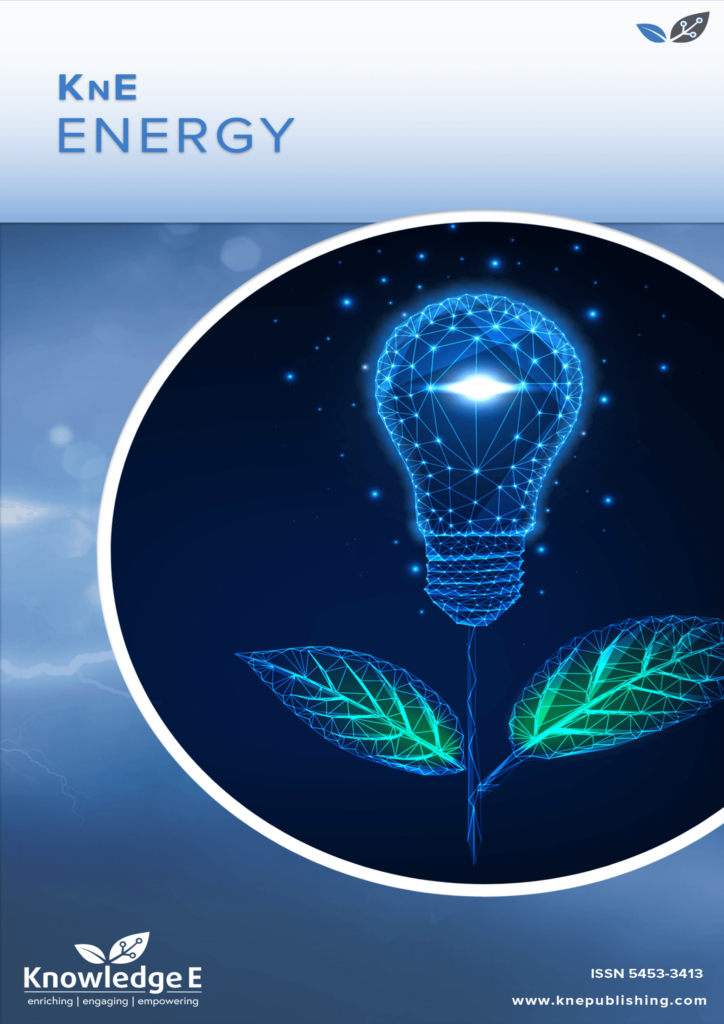
KnE Energy
ISSN: 2413-5453
The latest conference proceedings on energy science, applications and resources
Curcuma Longa Extract as a Sensitizer for Singlet Oxygen Generation
Published date:Apr 17 2018
Journal Title: KnE Energy
Issue title: The 2nd International Symposium "Physics, Engineering and Technologies for Biomedicine"
Pages:486–492
Authors:
Abstract:
In this work, the spectral study of aqueous extract of Curcuma Longa (Turmeric) to determine the photodynamic properties. It is established that due to the absorption extract light of wavelength 400-450 nm and intensive fluorescence in the red region of the spectrum, this extract can be used as a sensitizer of singlet oxygen (1Δ
References:
[1] Z. Huang, “A review of progress in clinical photodynamic therapy,” Technol. Cancer Res. Treat, vol. 4 (3): 283–93, 2005.
[2] V. Monge-Fuentes, L.A. Muehlmann, J.P. Figueiro Longo, J.R. Silva, M.L. Fascineli, P. de Souza, F. Faria, I.A. Degterev and others, “Photodynamic therapy mediated by acai oil (Euterpe oleracea Martius) in nanoemulsion: A potential treatment for melanoma,” Journal of Photochemistry & Photobiology, B:Biology, vol. 166, pp. 301- 310, 2017.
[3] X.F.Zhang, X. Yang, “Singlet oxygen generation and triplet excited-state spectra of brominated BODIPY,” The Journal of Physical Chemistry. B, vol. 117(18), pp. 5533- 5539, 2013.
[4] S. Clement, M. Sobhan, W. Deng, E. Camilleri, E.M. Goldys, “Nanoparticle-mediated singlet oxygen generation from photosensitizers, ” Journal of Photochemistry and Photobiology A: Chemistry, vol. 332, no.1, pp. 66-71, 2017.
[5] M. Riethmüller, N. Burger N, G. Bauer, “Singlet oxygen treatment of tumor cells triggers extracellular singlet oxygen generation, catalase inactivation and reactivation of intercellular apoptosis-inducing signaling,” Redox Biol, pp.57-68, 2017.
[6] Huaiyi Huang, Pingyu Zhang, Bole Yu and others “Synthesis, characterization and biological evaluation of mixed-ligand ruthenium(II) complexes for photodynamic therapy,” Dalton Transactions, vol. 44, no. 39, pp. 17335-17345, 2015.
[7] I.S. Vinklarek, M. Scholz, R. Dedic, J. Hala “Singlet oxygen feedback delayed fluorescence of protoporphyrin IX in organic solutions,” Photochem. Photobiol. Sci.,vol.16, no. 4, pp. 507-518, 2017.
[8] M. Scholz, R. Ddic, T. Breitenbach and J.Hála “Singlet oxygen-sensitized delayed fluorescence of common watersoluble Photosensitizers,” Photochem. Photobiol. Sci., vol. 12, no. 10, pp. 1873-1884, 2013.
[9] Jiangping Liu, Yu Chen, Guanying Li and others, “Ruthenium(II) polypyridyl complexes as mitochondria-targeted two-photon photodynamic anticancer agents,” Biomaterials vol. 56, pp. 140-153, 2015.
[10] Yao Liu1, Rong Qin1, Sebastian A. J. Zaat, Eefjan Breukink, Michal Heger, “Antibacterial photodynamic therapy: overview of a promising approach to fight antibioticresistant bacterial infections,” Journal of Clinical and Translational Research, vol.1, no.3, pp. 140-167, 2015.
[11] B.B. Aggarwal, K.B. Harikumar, “Potential therapeutic effects of curcumin, the anti-inflammatory agent, against neurodegenerative, cardiovascular, pulmonary, metabolic, autoimmune and neoplastic diseases,”Int J Biochem Cell Biol, vol. 41, no. 1, pp.40-59, 2009.
[12] Kate C. Blanco, Natalia M. Inada, Fernanda M. Carbinatto and Vanderlei S. Bagnato, “Antimicrobial Efficacy of Curcumin Formulations by Photodynamic Therapy, “Journal of Pharmacy and Pharmacology, vol. 5, pp. 506-511, 2017.
[13] M.C.Rodrigues, L.A.Muehlmann, P.F. João, J.P.F.Longo, R.C.Silva, I.B.Graebner, I.A.Degterev, C.M. Lucci, R.B.Azevedo, M.P. Garcia, “Photodynamic Therapy Based on Arrabidaea chica (Craj-iru) Extract Nanoemulsion: In vitro Activity against Monolayers and Spheroids of Human Mammary Adenocarcinoma MCF-7 Cells, “J. Nanomed. Nanotechnol, vol. 6, pp. 286 – 291, 2015.
[14] Skehan, P., Storeng, R., Scudiero, D., Monks, A., J. McMahon., D. Vistica, J.T. Warren, H. Bokesch, S. Kenney, M.R. Boyd, “New Colori-metric Cytotoxicity Assay for Anticancer-Drug Screening,” Journal of the National Cancer Institute, vol. 82, Issue 13, pp. 1107–1112, 1990.